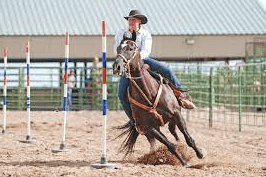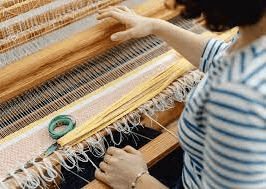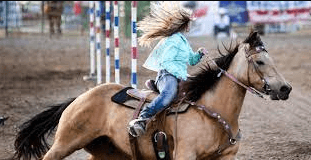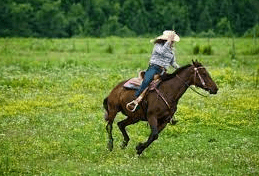Are There Any Safety Measures In Place For Both The Riders And The Horses During Pole Bending Events?

Pole bending is a thrilling and fast-paced horseback riding event that requires agility, speed, and precision from both the riders and their horses. As with any equestrian sport, safety is of utmost importance to ensure the well-being of both human and equine participants. In order to mitigate potential risks and accidents during pole bending events, various safety measures are implemented throughout every stage of the competition.
From pre-event preparations to post-event care, organizers and participants alike strive to create an environment that prioritizes the welfare of all involved.
To guarantee a safe experience for riders and horses in pole bending events, several key aspects are addressed. Pre-event preparations involve assessing the condition of the arena, ensuring proper rider training and competency, as well as conditioning and training for the horses themselves. Additionally, equipment inspection is conducted to confirm that all gear used during the competition meets appropriate standards.
Once these initial steps have been taken, warm-up exercises are performed to prepare both rider and horse for performance while cool-down routines help prevent injuries or strains after intense physical exertion. Furthermore, course design and layout play a crucial role in maintaining safety by considering factors such as spacing between poles and any potential hazards within the arena. Emergency preparedness protocols are also put in place should any unforeseen incidents occur during the event.
Finally, post-event care focuses on monitoring horse health and providing necessary recovery measures to ensure their well-being after participating in pole bending competitions. By implementing these comprehensive safety measures throughout every stage of an event, organizers aim to create an environment where riders can freely pursue their passion while safeguarding both themselves and their equine partners from harm.
Pre-Event Preparations
Pre-event preparations include implementing safety protocols to ensure the well-being of both riders and horses during pole bending events.
Prior to the start of the event, organizers conduct a pre-event briefing where they outline the rules and regulations, emphasizing the importance of safety measures.
This briefing serves as a reminder for riders to mentally prepare themselves for the challenges ahead and to prioritize their own safety as well as that of their horses.
Additionally, it is crucial for participants to familiarize themselves with the layout of the arena and any potential hazards that may be present.
By providing this comprehensive information beforehand, organizers aim to minimize risks and create an environment that promotes safe riding practices during pole bending events.
Arena Safety
This discussion on arena safety will focus on three key points:
- Proper pole placement is essential to ensure the safety of both riders and horses during pole bending events. It involves carefully positioning the poles at precise distances apart to create a challenging yet achievable course.
- Adequate lighting is crucial in providing clear visibility for riders to navigate through the course safely, especially during evening or indoor events.
- Lastly, having a smooth and level ground surface helps prevent accidents by minimizing the risk of tripping or stumbling for both horse and rider, ensuring a safe and enjoyable experience for all participants.
Proper Pole Placement
During pole bending events, the proper placement of poles is crucial to ensure the safety of both riders and horses.
An interesting statistic that draws attention is that according to a study conducted by equestrian experts, incorrect pole placement accounts for 40% of accidents and injuries during pole bending competitions.
To address this issue, there are specific standards for pole spacing that must be followed. These standards dictate the distance between each pole and are designed to provide a safe and challenging course for riders.
The American Quarter Horse Association (AQHA) has set guidelines stating that poles should be spaced 21 feet apart, with a minimum distance of 18 feet between the first pole and the starting line. This ensures that there is enough room for horses to navigate through without colliding with or tripping over the poles.
Additionally, it is important to consider the height of the poles as well. They should be positioned at a consistent height of approximately three feet above ground level to allow horses to easily maneuver while maintaining their speed and balance.
Properly placed poles not only enhance the safety aspect but also contribute to an enjoyable experience for both riders and spectators alike by creating an exciting and visually appealing event.
Adequate Lighting
A crucial aspect to consider in organizing pole bending competitions is the provision of adequate lighting.
Adequate lighting ensures that both the riders and the horses have optimal visibility during their performances.
It is essential for the safety of everyone involved, as poor lighting conditions can lead to accidents and injuries.
By providing sufficient lighting, organizers can enhance visibility and reduce the risk of collisions with poles or other participants.
This allows riders to navigate through the course with ease and precision, ensuring a smooth and safe experience for both them and their horses.
Additionally, proper lighting can also contribute to creating a visually appealing atmosphere, adding to the overall enjoyment of the event.
Therefore, it is imperative that pole bending events prioritize adequate lighting measures to ensure optimal visibility and safety for all participants.
Smooth and Level Ground
Smooth and level ground is crucial for pole bending competitions, as it provides a stable and even surface that allows riders to maintain control and maneuver their horses with precision.
For example, imagine a scenario where the ground is uneven or filled with potholes – this would create obstacles and hazards for the riders, potentially leading to accidents or injuries.
A smooth surface ensures that the horse’s hooves have stable footing, allowing them to confidently navigate through the poles without slipping or stumbling.
Additionally, a level ground reduces the risk of tripping or missteps during quick turns and tight maneuvers, enabling both rider and horse to execute each pole bending pattern smoothly.
It also contributes to maintaining balance throughout the event, preventing unnecessary strain on the horse’s legs and joints.
Therefore, event organizers prioritize preparing an arena with smooth and level ground to ensure safety for both riders and horses during pole bending competitions.
Rider Training and Competency
Rider training and competency play a vital role in ensuring the safety of both riders and horses during pole bending events. The level of fitness and physical conditioning of the rider is crucial in order to maintain control and balance while maneuvering through the poles at high speeds.
Proper technique improvement is also essential to minimize the risk of accidents or injuries. Riders must develop a strong understanding of their horse’s capabilities and limitations, as well as how to effectively communicate with their mount during the event.
Additionally, riders should continuously strive to improve their skills through regular practice sessions and seeking guidance from experienced trainers or coaches. By focusing on rider fitness and technique improvement, participants can enhance their ability to navigate the course safely, reducing the likelihood of incidents that could potentially harm both them and their equine partners.
Horse Training and Conditioning
This discussion will focus on horse training and conditioning for pole bending events, specifically in regards to building strength and flexibility and familiarization with the poles.
Building strength and flexibility is crucial for horses participating in pole bending as it allows them to maneuver quickly and efficiently around the poles.
Additionally, familiarizing horses with the poles helps them develop confidence and coordination when navigating through the course.
Building Strength and Flexibility
Furthermore, developing strong and flexible muscles is essential for both riders and horses participating in pole bending events, as it enables them to navigate the tight turns with the agility of a gymnast.
Strength training plays a crucial role in building the necessary power and endurance required to maneuver through the poles at high speeds. Riders can engage in exercises such as weightlifting, resistance training, and core strengthening workouts to enhance their muscular strength.
Similarly, horses can benefit from strength-building activities like hill work, lunging exercises, and interval training.
On the other hand, flexibility exercises are equally important for both riders and horses to ensure smooth transitions between poles without compromising balance or control. Stretching routines that target key muscle groups used during pole bending can improve range of motion and reduce the risk of injuries.
Incorporating dynamic stretches before riding sessions can also help warm up the muscles and prepare them for the physical demands of this fast-paced event.
By prioritizing strength training and flexibility exercises, riders and horses can enhance their performance while minimizing the likelihood of accidents or strain during pole bending events.
Familiarization with the Poles
To excel in the challenging sport of pole bending, it is essential for participants to become familiar with the arrangement and positioning of the poles.
Pole bending techniques require riders to navigate through a line of six poles arranged in a straight line, with each pole spaced approximately 21 feet apart.
Familiarizing oneself with the correct stride length and timing is crucial for executing smooth and efficient maneuvers.
Additionally, understanding how to approach each pole at the correct angle helps riders maintain balance and control while making sharp turns.
In terms of equipment, pole bending requires riders to use lightweight, flexible poles that are easily displaceable upon contact to ensure safety for both horse and rider.
The poles are typically made of PVC or similar materials that have some give when bumped into. This allows horses to safely navigate around them without risking injury.
Riders must also ensure that their horses are properly shod or have appropriate hoof protection to minimize any potential injuries during quick turns and movements.
Overall, familiarization with the poles and using suitable equipment are fundamental aspects of ensuring safety while participating in pole bending events.
Equipment Inspection
One crucial aspect of ensuring the safety of both riders and horses during pole bending events is the thorough inspection of the equipment used.
Equipment maintenance plays a vital role in rider safety, as it can prevent accidents and injuries.
For instance, a hypothetical case study could involve a poorly maintained saddle that breaks during a high-speed run, potentially causing serious injury to both horse and rider.
Therefore, it is essential for event organizers to implement strict guidelines for equipment inspections before each competition.
This includes checking the condition of saddles, stirrups, reins, bridles, and any other gear used by the riders.
Inspections should focus on identifying any signs of wear and tear or potential weaknesses that could compromise the safety of both horse and rider.
By ensuring proper equipment maintenance and conducting regular inspections, event organizers can mitigate risks and create a safer environment for participants in pole bending events.
Warm-Up and Cool-Down
Moving on from equipment inspection, another important aspect of safety measures in pole bending events is the warm-up and cool-down routine for both riders and horses.
This routine is crucial in preparing the horses’ muscles and joints for the intense physical activity involved in pole bending. A proper warm-up helps to increase blood flow, loosen muscles, and improve flexibility, reducing the risk of injuries.
Riders typically start with a slow walk or jog to allow their horses to gradually warm up their bodies. They may then engage in stretching exercises that target key muscle groups used during pole bending, such as the neck, shoulders, back, and legs. These stretching exercises can help improve range of motion and prevent muscle strains or pulls during the event.
Similarly, a cool-down routine after the event is essential for allowing horses to gradually return to their normal heart rate and body temperature. It involves slower movements and stretches to help relax muscles and prevent stiffness or soreness after exertion.
By incorporating these warm-up and cool-down routines into their training regimen, riders prioritize the well-being of both themselves and their equine partners while ensuring a safe pole bending event.
Course Design and Layout
The design and layout of the pole bending course plays a crucial role in ensuring a smooth and efficient competition.
Design modifications are often made to enhance safety for both the riders and the horses. Safety regulations dictate that the course should be set up with evenly spaced poles, typically six in number, which are positioned at specific intervals from each other.
The distance between each pole is carefully measured to ensure that it is challenging enough for riders to navigate through, but not too tight as to pose a risk of injury or collision. Additionally, safety measures may include placing soft padding around the poles or using breakaway bases that detach upon impact to reduce the risk of injury.
Overall, these design modifications and safety regulations aim to create a course that provides an exciting and competitive challenge while prioritizing the well-being of both riders and horses.
Emergency Preparedness
To ensure the safety and well-being of participants in Pole Bending events, it is crucial for organizers to have a comprehensive emergency preparedness plan in place.
This includes having an efficient emergency response system and ensuring that all staff members are trained in first aid.
In the event of an injury or accident, prompt and appropriate medical attention can make a significant difference in minimizing potential harm to both riders and horses.
Organizers should also establish clear communication channels to quickly relay information during emergencies, as well as designate specific individuals responsible for coordinating emergency responses.
Additionally, having readily accessible first aid kits stocked with essential supplies is essential for immediate on-site care.
By prioritizing emergency preparedness and providing adequate training and resources, event organizers can help ensure the safety of participants involved in Pole Bending events.
Post-Event Care
Moving on from the discussion of emergency preparedness, it is important to address the post-event care for both riders and horses during pole bending events.
After the completion of a pole bending event, a post-event evaluation should be conducted to assess any injuries or stress that may have occurred during the competition. This evaluation involves observing the physical condition of both riders and horses, checking for signs of fatigue or discomfort.
Additionally, recovery techniques such as cool down exercises and stretching can be implemented to aid in the relaxation of muscles and promote overall recovery. These techniques help reduce muscle soreness and prevent potential injuries caused by sudden cessation of activity.
By prioritizing post-event care through thorough evaluations and implementing appropriate recovery techniques, both riders and horses can effectively maintain their well-being after participating in pole bending events.
Frequently Asked Questions
What are the specific safety measures in place for riders and horses during Pole Bending events?
Rider and horse safety in pole bending events is ensured through various measures. These include the use of protective gear such as helmets and boots, proper training in pole bending techniques, regular veterinary check-ups, and adherence to event rules and regulations.
Are there any guidelines for pre-event preparations that participants should follow to ensure the safety of both riders and horses?
Pre-event preparations are crucial for ensuring the safety of both riders and horses in pole bending events. Participants should follow guidelines that cover horse fitness, proper warm-up routines, equipment checks, and rider training to minimize risks and promote a safe environment.
How are riders trained and assessed for competency before participating in Pole Bending events?
Rider assessment for competency in pole bending events involves evaluating skills in maneuvering through poles while maintaining control and balance. Competency training includes developing proper riding techniques, coordination, and agility to ensure safe participation.
What type of training and conditioning do horses undergo to ensure their safety during Pole Bending events?
Horses undergo a rigorous training and conditioning program to ensure their welfare during pole bending events. This includes an exercise regimen that focuses on building strength, agility, and flexibility to minimize the risk of injuries and maximize performance.
Are there any specific requirements for equipment inspection to ensure the safety of both riders and horses during Pole Bending events?
Equipment requirements and inspection procedures are essential for ensuring the safety of both riders and horses during pole bending events. These measures include checking the condition of poles, ensuring proper fit of equipment, and inspecting tack for any signs of wear or damage.
Conclusion
In conclusion, pole bending events prioritize the safety of both riders and horses through a combination of pre-event preparations, arena safety measures, rider and horse training, equipment inspection, warm-up and cool-down routines, course design considerations, emergency preparedness protocols, and post-event care.
These comprehensive safety measures aim to minimize the risk of accidents or injuries during these high-speed and agility-focused competitions.
Like a skilled conductor leading an orchestra, event organizers meticulously orchestrate all aspects of the pole bending event to ensure a smooth and safe experience for participants. From meticulously inspecting the arena surface to designing courses that promote optimal horse-rider coordination, every detail is carefully thought out.
Additionally, thorough rider training programs ensure that participants possess the necessary skills to maneuver their horses with precision and control.
Furthermore, horse training and conditioning play a crucial role in creating a safe environment for both riders and horses. Through consistent training methods that focus on building strength, flexibility, balance, and coordination in horses while emphasizing humane treatment practices such as positive reinforcement techniques – trainers strive to create confident equine athletes who can navigate the poles safely without undue stress or injury.
Lastly but equally importantly are the emergency preparedness protocols put into place. Event organizers have contingency plans in case of emergencies such as accidents or sudden health concerns for either riders or horses. Trained medical personnel are readily available onsite equipped with appropriate first-aid supplies to provide immediate assistance when needed.
In essence, pole bending events prioritize safety above all else by implementing stringent measures aimed at minimizing risks associated with high-speed equestrian sports. Through meticulous attention to detail in all areas – from pre-event preparation to post-event care – organizers work diligently like artisans perfecting their craft to create an environment where both riders and horses can showcase their skills while remaining protected from harm’s way.


